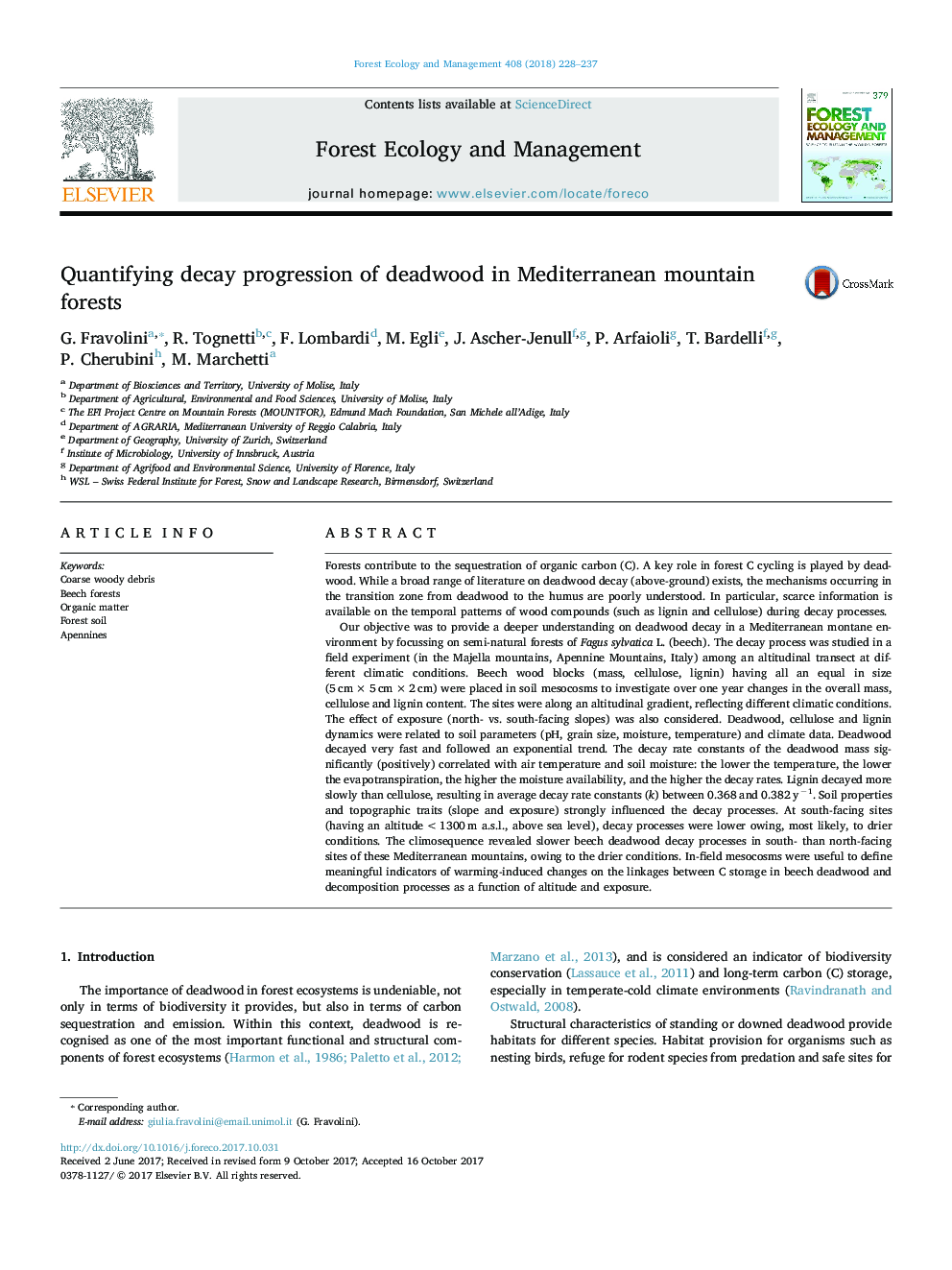| کد مقاله | کد نشریه | سال انتشار | مقاله انگلیسی | نسخه تمام متن |
|---|---|---|---|---|
| 6541935 | 1421350 | 2018 | 10 صفحه PDF | دانلود رایگان |
عنوان انگلیسی مقاله ISI
Quantifying decay progression of deadwood in Mediterranean mountain forests
ترجمه فارسی عنوان
کیفی کردن روند کاشت چوب مرده در جنگل های کوهستانی مدیترانه
دانلود مقاله + سفارش ترجمه
دانلود مقاله ISI انگلیسی
رایگان برای ایرانیان
کلمات کلیدی
موضوعات مرتبط
علوم زیستی و بیوفناوری
علوم کشاورزی و بیولوژیک
بوم شناسی، تکامل، رفتار و سامانه شناسی
چکیده انگلیسی
Our objective was to provide a deeper understanding on deadwood decay in a Mediterranean montane environment by focussing on semi-natural forests of Fagus sylvatica L. (beech). The decay process was studied in a field experiment (in the Majella mountains, Apennine Mountains, Italy) among an altitudinal transect at different climatic conditions. Beech wood blocks (mass, cellulose, lignin) having all an equal in size (5â¯cmâ¯Ãâ¯5â¯cmâ¯Ãâ¯2â¯cm) were placed in soil mesocosms to investigate over one year changes in the overall mass, cellulose and lignin content. The sites were along an altitudinal gradient, reflecting different climatic conditions. The effect of exposure (north- vs. south-facing slopes) was also considered. Deadwood, cellulose and lignin dynamics were related to soil parameters (pH, grain size, moisture, temperature) and climate data. Deadwood decayed very fast and followed an exponential trend. The decay rate constants of the deadwood mass significantly (positively) correlated with air temperature and soil moisture: the lower the temperature, the lower the evapotranspiration, the higher the moisture availability, and the higher the decay rates. Lignin decayed more slowly than cellulose, resulting in average decay rate constants (k) between 0.368 and 0.382 yâ1. Soil properties and topographic traits (slope and exposure) strongly influenced the decay processes. At south-facing sites (having an altitude < 1300â¯m a.s.l., above sea level), decay processes were lower owing, most likely, to drier conditions. The climosequence revealed slower beech deadwood decay processes in south- than north-facing sites of these Mediterranean mountains, owing to the drier conditions. In-field mesocosms were useful to define meaningful indicators of warming-induced changes on the linkages between C storage in beech deadwood and decomposition processes as a function of altitude and exposure.
ناشر
Database: Elsevier - ScienceDirect (ساینس دایرکت)
Journal: Forest Ecology and Management - Volume 408, 15 January 2018, Pages 228-237
Journal: Forest Ecology and Management - Volume 408, 15 January 2018, Pages 228-237
نویسندگان
G. Fravolini, R. Tognetti, F. Lombardi, M. Egli, J. Ascher-Jenull, P. Arfaioli, T. Bardelli, P. Cherubini, M. Marchetti,
